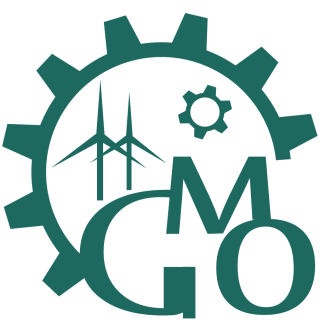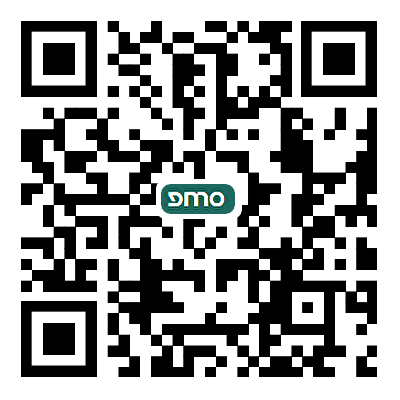REFERENCES
2. Ahmadi Z, Lee S, Unocic RR, Shamsaei N, Mahjouri-Samani M. Additive nanomanufacturing of multifunctional materials and patterned structures: a novel laser-based dry printing process. Adv Mater Technol 2021;6:2001260.
3. Ahmadi Z, Lee S, Patel A, Unocic RR, Shamsaei N, Mahjouri-Samani M. Dry printing and additive nanomanufacturing of flexible hybrid electronics and sensors. Adv Mater Inter 2022;9:2102569.
4. Martins R, Gaspar D, Mendes MJ, et al. Papertronics: multigate paper transistor for multifunction applications. Appl Mater Today 2018;12:402-14.
5. Singh R, Sharma V. Nano tungsten carbide interactions and mechanical behaviour during sintering: a molecular dynamics study. Comput Mater Sci 2021;197:110653.
6. Bordia RK, Kang SL, Olevsky EA. Current understanding and future research directions at the onset of the next century of sintering science and technology. J Am Ceram Soc 2017;100:2314-52.
7. Kockerbeck Z. Investigation of intensive pulsed light sintering for conductive hybrid copper ink. 2019. Available from: https://prism.ucalgary.ca/server/api/core/bitstreams/141c740d-fcec-4939-a1c9-43a6c7889387/content. [Last accessed on 26 Sep 2024].
8. Yan F, Zhang X, Yang C, Hu B, Qian W, Song Z. Data-driven modelling methods in sintering process: current research status and perspectives. Can J Chem Eng 2023;101:4506-22.
9. Pan J, Le H, Kucherenko S, Yeomans J. A model for the sintering of spherical particles of different sizes by solid state diffusion. Acta Mater 1998;46:4671-90.
10. Buesser B, Gröhn AJ, Pratsinis SE. Sintering rate and mechanism of TiO2 nanoparticles by molecular dynamics. J Phys Chem C Nanomater Interfaces 2011;115:11030-5.
11. Yang G, Lai H, Lin W, et al. A quantitative model to understand the microflow-controlled sintering mechanism of metal particles at nanometer to micron scale. Nanotechnology 2021;32:505721.
12. Jamshideasli D, Mahjouri-samani M, Shamsaei N, Shao S. Molecular dynamics simulations of nanoparticle sintering in additive nanomanufacturing: the role of particle size, misorientation angle, material type, and temperature. Mater Today Commun 2024;39:108877.
13. Zhu H. Sintering processes of two nanoparticles: a study by molecular dynamics simulations. Phil Mag Lett 1996;73:27-33.
14. Yang Y, Li Z, Yang S, Li Y, Huang J. Multiscale simulation study of laser sintering of inkjet-printed silver nanoparticle inks. Int J Heat Mass Tran 2020;159:120110.
15. Rahaman MN. 2 - Kinetics and mechanisms of densification. In: Sintering of advanced materials. Elsevier; 2010. pp. 33-64.
16. Song P, Wen D. Molecular dynamics simulation of the sintering of metallic nanoparticles. J Nanopart Res 2010;12:823-9.
17. Alshammery AOA. Modelling sintering at particle scale using variational and molecular dynamic methods. 2018. Available from: https://figshare.le.ac.uk/articles/thesis/Modelling_sintering_at_particle_scale_using_variational_and_molecular_dynamic_methods/10199432?file=18381725. [Last accessed on 26 Sep 2024]
18. German RM. Chapter three - Infrastructure developments. In: Sintering: from empirical observations to scientific principles. Elsevier; 2014. pp. 41-69.
19. Zeng P, Zajac S, Clapp P, Rifkin J. Nanoparticle sintering simulations. Mat Sci Eng A 1998;252:301-6.
20. Gu M, Liu T, Xiao X, Li G, Liao W. Simulation and experimental study of the multisized silver nanoparticles sintering process based on molecular dynamics. Nanomaterials 2022;12:1030.
21. Hu Y, Wang Y, Yao Y. Molecular dynamics on the sintering mechanism and mechanical feature of the silver nanoparticles at different temperatures. Mater Today Commun 2023;34:105292.
22. Zhang L, Shibuta Y, Lu C, Huang X. Interaction between nano-voids and migrating grain boundary by molecular dynamics simulation. Acta Mater 2019;173:206-24.
23. Lange A, Samanta A, Majidi H, et al. Dislocation mediated alignment during metal nanoparticle coalescence. Acta Mater 2016;120:364-78.
24. Rojek J, Nosewicz S, Maździarz M, Kowalczyk P, Wawrzyk K, Lumelskyj D. Modeling of a sintering process at various scales. Procedia Eng 2017;177:263-70.
25. Alarifi H, Hu A, Yavuz M, Zhou YN. Silver nanoparticle paste for low-temperature bonding of copper. J Electron Mater 2011;40:1394-402.
26. Pan J. Solid-state diffusion under a large driving force and the sintering of nanosized particles. Phil Mag Lett 2004;84:303-10.
27. Pan H, Ko SH, Grigoropoulos CP. The solid-state neck growth mechanisms in low energy laser sintering of gold nanoparticles: a molecular dynamics simulation study. J Heat Transfer 2008;130:092404.
28. Sestito JM, Abdeljawad F, Harris TA, Wang Y, Roach A. An atomistic simulation study of nanoscale sintering: the role of grain boundary misorientation. Comput Mater Sci 2019;165:180-9.
29. Zeng P. Computer simulation of nanoparticle sintering. 1999. Available from: https://digitalcommons.lib.uconn.edu/dissertations/AAI9926306. [Last accessed on 26 Sep 2024]
30. Callister WD Jr. Mitchell, Materials science and engineering: an introduction. 7th edition. John wiley & Sons New York, 2007. Available from: https://bcs.wiley.com/he-bcs/Books?action=index&itemId=0471736961&bcsId=2971. [Last accessed on 26 Sep 2024].
31. Mishin Y, Herzig C, Bernardini J, Gust W. Grain boundary diffusion: fundamentals to recent developments. Int Mater Rev 1997;42:155-78.
32. Sai Rajeshwari K, Sankaran S, Hari Kumar KC, et al. Grain boundary diffusion and grain boundary structures of a Ni-Cr-Fe- alloy: evidences for grain boundary phase transitions. Acta Mater 2020;195:501-18.
33. Legros M, Dehm G, Arzt E, Balk TJ. Observation of giant diffusivity along dislocation cores. Science 2008;319:1646-9.
34. Hirth JP, Lothe J. Theory of dislocations, 1992. https://books.google.com/books/about/Theory_of_Dislocations.html?id=LFZGAAAAYAAJ. [Last accessed on 26 Sep 2024].
35. Smith WF, Hashemi J. Crystal and amorphous structures in materials. In: Foundations of materials science and engineering. Available from: http://sutlib2.sut.ac.th/sut_contents/H97858.pdf. [Last accessed on 26 Sep 2024].
36. Pike NA, Løvvik OM. Calculation of the anisotropic coefficients of thermal expansion: a first-principles approach. Comput Mater Sci 2019;167:257-63.
37. Scola J, Tassart X, Vilar C, et al. Microstructure and electrical resistance evolution during sintering of a Ag nanoparticle paste. J Phys D Appl Phys 2015;48:145302.
38. Zhou XW, Johnson RA, Wadley HNG. Misfit-energy-increasing dislocations in vapor-deposited CoFe/NiFe multilayers. Phys Rev B 2004;69:144113.
39. Mendelev M, King A. The interactions of self-interstitials with twin boundaries. Philos Mag 2013;93:1268-78.
40. Huang P, Hsu P, Huang T, Chou C. Laser sintering of Cu nanoparticles: analysis based on modified continuum-atomistic model. Appl Phys A 2020;126:3213.
41. Haslam A, Phillpot S, Wolf D, Moldovan D, Gleiter H. Mechanisms of grain growth in nanocrystalline fcc metals by molecular-dynamics simulation. Mater Sci Eng A 2001;318:293-312.
42. Nelli D, Cerbelaud M, Ferrando R, Minnai C. Tuning the coalescence degree in the growth of Pt-Pd nanoalloys. Nanoscale Adv 2021;3:836-46.
43. Taba A, Ahmadi Z, Patel A, et al. Dry-printing conductive circuit traces on water-soluble papers. ACS Sustain Chem Eng 2023;11:16407-16.
44. Ghosh P, Lu J, Chen Z, Yang H, Qiu M, Li Q. Photothermal-induced nanowelding of metal–semiconductor heterojunction in integrated nanowire units. Adv Elect Mater 2018;4:1700614.
45. Sisáková K, Oriňak A, Oriňaková R, et al. Methane decomposition over modified carbon fibers as effective catalysts for hydrogen production. Catal Lett 2020;150:781-93.
46. Wei X, Zhang J, Xu K. The energy and structure of (0 0 1) twist grain boundary in noble metals. Appl Surf Sci 2006;253:854-8.
47. Ayadi A, Laib H, Khalfallah O. Relationship between structure and energy of symmetric tilt grain boundaries in Ag and Ni. Acta Phys Pol A 2020;138:528-32.
48. Thompson AP, Aktulga HM, Berger R, et al. LAMMPS - a flexible simulation tool for particle-based materials modeling at the atomic, meso, and continuum scales. Comput Phys Commun 2022;271:108171.
49. Stukowski A. Visualization and analysis of atomistic simulation data with OVITO–the open visualization tool. Modelling Simul Mater Sci Eng 2010;18:015012.
50. Sheppard D, Terrell R, Henkelman G. Optimization methods for finding minimum energy paths. J Chem Phys 2008;128:134106.
51. Larsen PM, Schmidt S, Schiøtz J. Robust structural identification via polyhedral template matching. Modelling Simul Mater Sci Eng 2016;24:055007.
52. Pozzi M, Jonak Dutta S, Kuntze M, et al. Visualization of the high surface-to-volume ratio of nanomaterials and its consequences. J Chem Educ 2024;101:3146-55.
53. Kittel C. Introduction to solid state physics, 8th edition. John Wiley & Sons, Inc. Available from: http://metal.elte.hu/~groma/Anyagtudomany/kittel.pdf. [Last accessed on 26 Sep 2024].
54. Meyer R, Lewis LJ. Stacking-fault energies for Ag, Cu, and Ni from empirical tight-binding potentials. Phys Rev B 2002;66:052106.
55. George Ellwood D. Mechanical metallurgy. Available from: https://stu.westga.edu/~bthibau1/MEDT%207477-Cooper/Calibre%20Library/Dieter_%20George%20Ellwood/Mechanical%20metallurgy%20(13)/Mechanical%20metallurgy%20-%20Dieter_%20George%20Ellwood.pdf. [Last accessed on 26 Sep 2024].
56. Hertzberg RW, Saunders H. Deformation and fracture mechanics of engineering materials (2nd Edition). J Pressure Vessel Technol 1985;107:309-11.
57. Cormier VF, Bergman MI, Olson PL. Chapter 7 - Inner core dynamics. In: Earth’s core. Elsevier; 2022. pp. 215-46.
58. Alarifi HA, Atis M, Özdoğan C, Hu A, Yavuz M, Zhou Y. Molecular dynamics simulation of sintering and surface premelting of silver nanoparticles. Mater Trans 2013;54:884-9.
59. Majumdar S, Raveendra S, Samajdar I, Bhargava P, Sharma I. Densification and grain growth during isothermal sintering of Mo and mechanically alloyed Mo–TZM. Acta Mater 2009;57:4158-68.
60. Pan S, Yao G, Cui Y, et al. Additive manufacturing of tungsten, tungsten-based alloys, and tungsten matrix composites. Tungsten 2023;5:1-31.
61. Lumley RN, Sercombe TB, Schaffer GM. Surface oxide and the role of magnesium during the sintering of aluminum. Metall Mater Trans A 1999;30:457-63.
62. Schaffer GB, Hall BJ, Bonner SJ, Huo SH, Sercombe TB. The effect of the atmosphere and the role of pore filling on the sintering of aluminium. Acta Mater 2006;54:131-8.
63. Hong S, van Duin AC. Molecular dynamics simulations of the oxidation of aluminum nanoparticles using the ReaxFF reactive force field. J Phys Chem C 2015;119:17876-86.
64. Raj R, Kulkarni A, Lebrun J, Jha S. Flash sintering: a new frontier in defect physics and materials science. MRS Bulletin 2021;46:36-43.
65. Bebek MB, Stanley CM, Gibbons TM, Estreicher SK. Temperature dependence of phonon-defect interactions: phonon scattering vs. phonon trapping. Sci Rep 2016;6:32150.
66. Zhang J, Wang X, Zhu Y, et al. Molecular dynamics simulation of the melting behavior of copper nanorod. Comput Mater Sci 2018;143:248-54.





